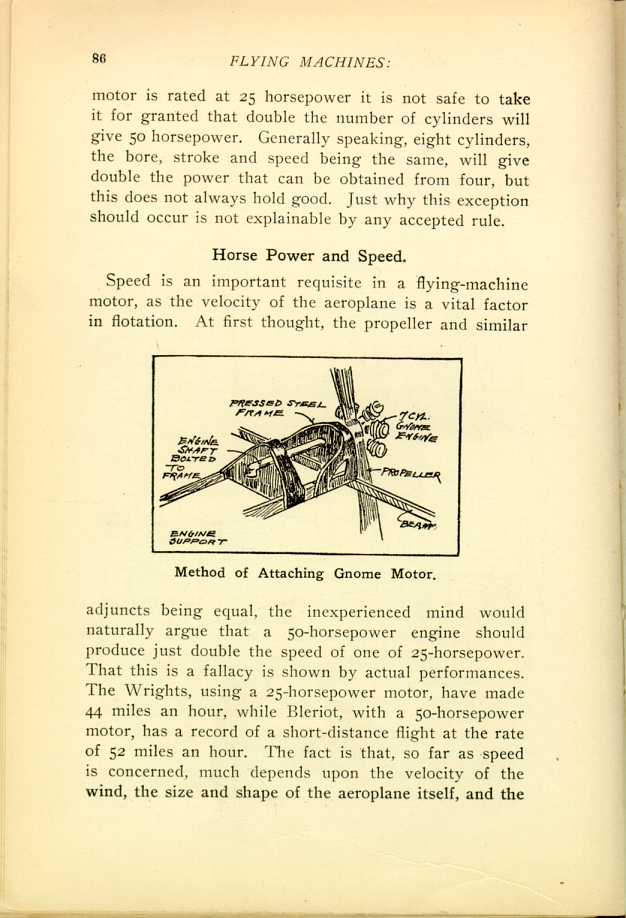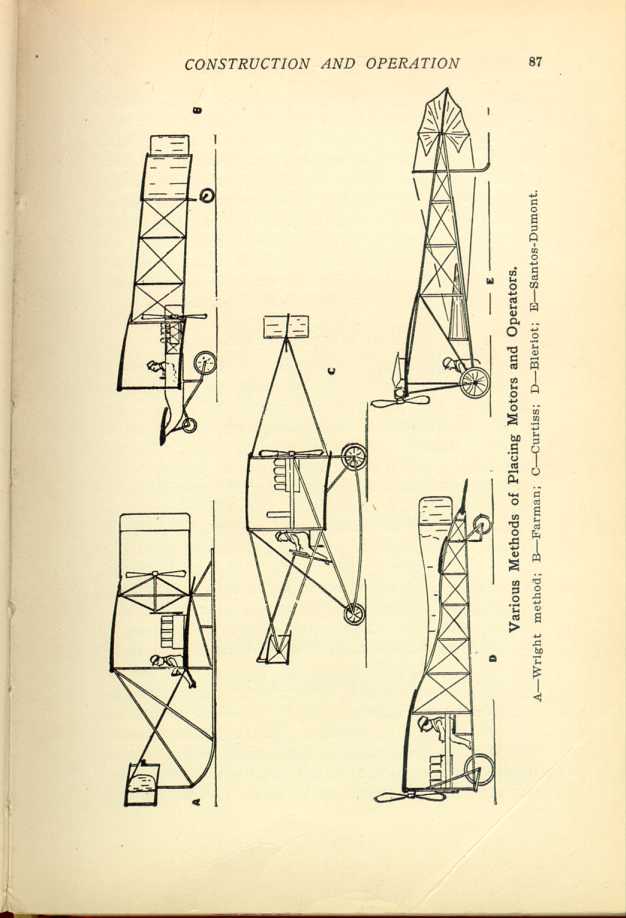Horse Power and Speed.
Speed is an important requisite in a flying-machine
motor, as the velocity of the aeroplane is a vital factor
in flotation. At first thought, the propeller and similar
adjuncts being equal, the inexperienced mind would
naturally argue that a 50-horsepower engine should
produce just double the speed of one of 25-horsepower.
That this is a fallacy is shown by actual performances.
The Wrights, using a 25-horsepower motor, have made
44 miles an hour, while Bleriot, with a 50-horsepower
motor, has a record of a short-distance flight at the rate
of 52 miles an hour. The fact is that, so far as speed
is concerned, much depends upon the velocity of the
wind, the size and shape of the aeroplane itself, and the
size, shape and gearing of the propeller. The stronger
the wind is blowing the easier it will be for the aeroplane
to ascend, but at the same time the more difficult
it will be to make headway against the wind in a horizontal
direction. With a strong head wind, and proper
engine force, your machine will progress to a certain
extent, but it will be at an angle. If the aviator desired
to keep on going upward this would be all right, but
there is a limit to the altitude which it is desirable to
reach—from 100 to 500 feet for experts—and after that
it becomes a question of going straight ahead.

